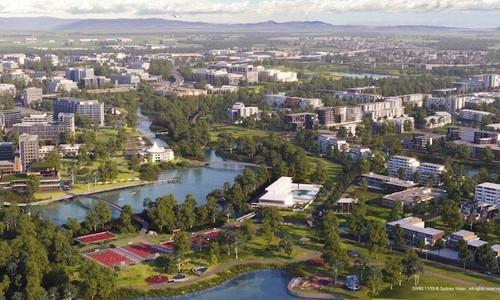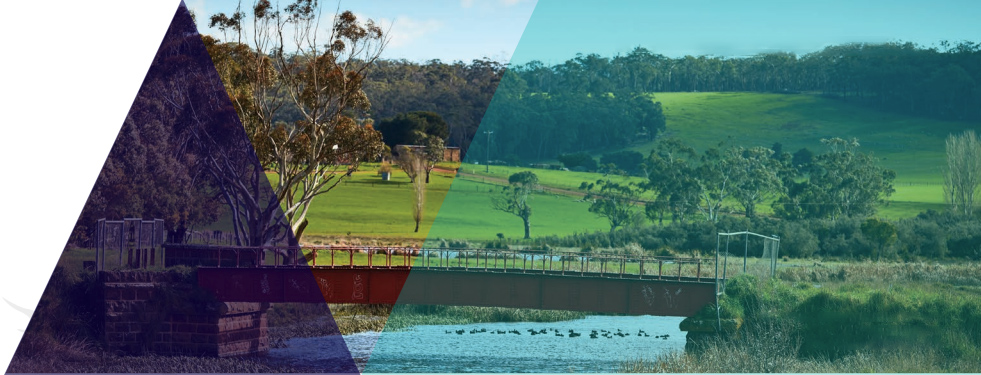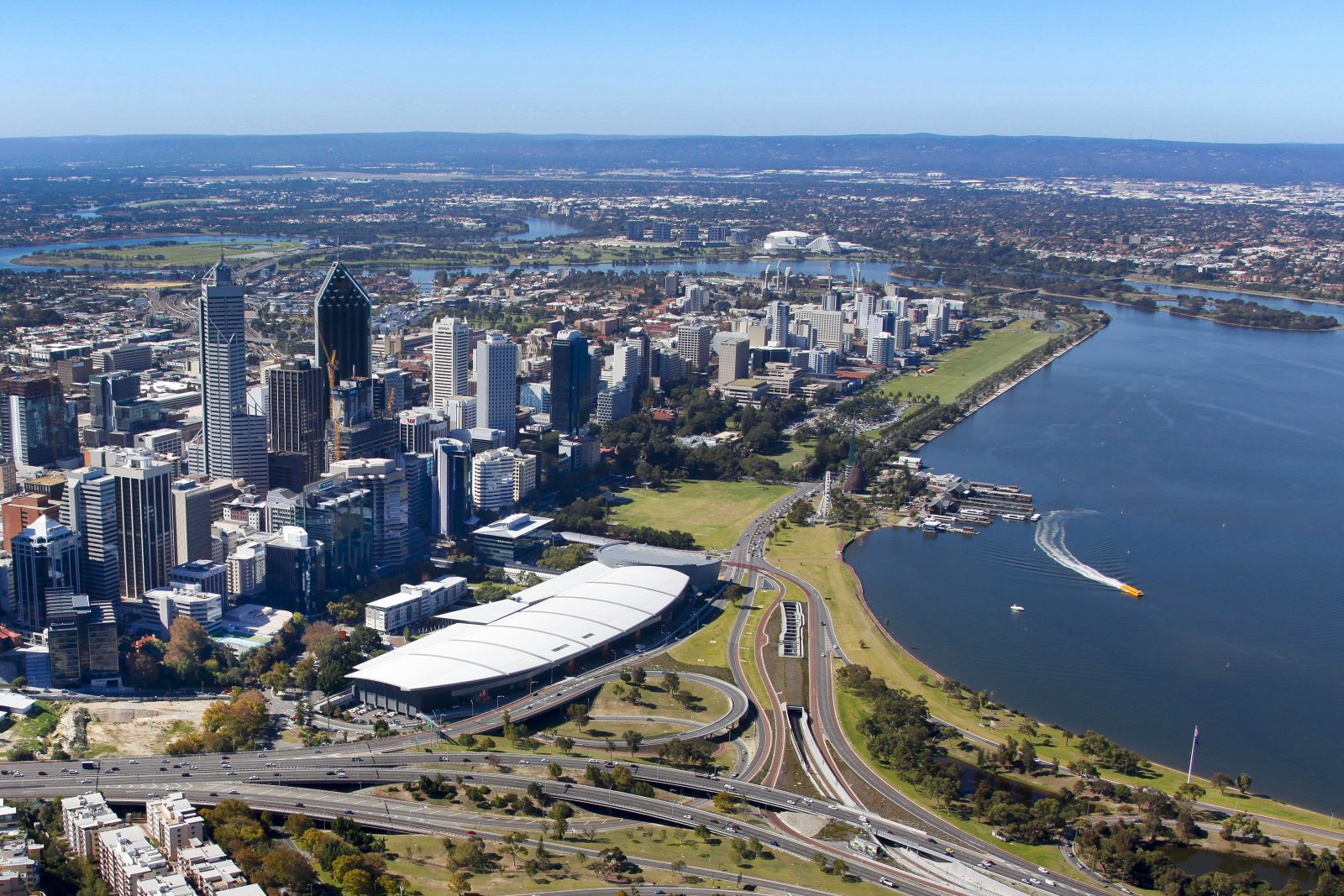Water sensitive practice. Every city. Every day
Water Sensitive Cities Australia’s mission is to change the way cities are designed, built and managed by valuing water’s contribution to economic development, quality of life and the ecosystems of which they are a part.
We’ll know we’re successful when water sensitive cities (WSC) principles and practices shift from being novel to becoming embedded as a new-normal practice, and move from demonstration and pilot projects to larger scale precinct and city-wide projects.
Pleasingly, we are seeing more and more evidence of WSC principles and practices being used in works on-ground, and at larger scales. The Fishermans Bend redevelopment in Melbourne (another item in this edition of WaterSENSE) is a good example of a precinct-scale water sensitive development. You can read about it here. And below are more examples of WSC principles in action at wider scales.
Re-imagining water in Western Sydney
Sydney Water has developed a Western Sydney Regional Master Plan that supports the NSW Government’s vision of the Western Parkland City, in Sydney’s west. As Sydney Water’s first regional servicing master plan, it goes beyond traditional ‘taps and toilets’ to consider, integrate, and understand the economic value of water in all its forms for shaping, building, greening and cooling a new Parkland City.
Developed in consultation with stakeholders, the plan’s vision is:
Our customers enjoy affordable and essential water services, healthy waterways and vibrant, cool and green places.
The master plan encompasses growth areas across Western Sydney – the North West Growth Area, the new Aerotropolis Growth Area and the South West Growth Area. It demonstrates how an adaptable and integrated water cycle management approach delivers the greatest economic value for the region.

An example is the integrated water system planned for Aerotropolis, the area surrounding the Western Sydney International (Nancy-Bird Walton) Airport. In Australia’s largest stormwater harvesting scheme, stormwater will flow through natural water channels and wetlands, instead of via buried concrete pipes or drains. Then it will be harvested, treated and reused as recycled water, generating benefits such as:
- a cooler, greener Western Parkland City
- healthier waterways
- a water supply independent of climate and rainfall
- alignment with Aboriginal cultural values by using natural and non-intrusive design
- meeting community’s expectations for contemporary urban planning and environmental protection
- more land for development that would have otherwise housed water infrastructure
- support for growth of surrounding industrial precincts.
Seeding water sensitive practice throughout Victoria
Water for Victoria, introduced in 2016, committed the Victorian Government to implementing integrated water management (IWM) across the state. IWM solutions match water sources to needs to create a range of fit-for-purpose water sources.
The agency responsible for cultivating IWM across Victoria – the Department of Environment, Land, Water and Planning (DELWP) – released its IWM Framework in 2017 which identified 7 outcome areas:
- safe, secure and affordable water supplies in an uncertain future
- effective and affordable wastewater systems
- managed existing and future flood risks and impacts
- healthy and valued waterways and marine environments
- healthy and valued urban, rural, agricultural and green landscapes
- community values are reflected in planning
- jobs, economic growth and innovation.

DELWP released a progress report in March 2022, which illustrates water sensitive practice is occurring throughout the state. Examples include:
- St Arnaud stormwater harvesting system construction (Wimmera)
- Central Highlands green-blue infrastructure plan (Central Highlands)
- Warrnambool roof water harvesting scheme construction (Great South Coast)
- North Geelong recycled water project construction (Barwon)
- Gunbower Creek restoration and parkland enhancement construction (Coliban)
- Goulburn Broken place-based small town wastewater management tool (Goulburn Broken)
- Tallangatta alternative water supply detailed design (North East)
- East Gippsland livestock exchange alternative water system construction (East Gippsland)
- Bass Coast Revegetation for biolink corridors (Gippsland)
- Sunraysia district flooding and drainage modelling (Northern Mallee).
Click on the button below to read the report.
We are delighted to be helping DELWP fulfil its objectives, by supporting IWM activities in regional Victoria. Find out more about the Victorian IWM Program here.
Transforming Perth to a leading water sensitive city
With its climate becoming hotter and drier, Perth needed a new approach to urban water management to meet growing urban development and demand for water. But more than finding new water sources, stakeholders in Perth realised they needed to collaborate across sectors and disciplines to maintain Perth’s liveability.

Perth stakeholders worked with the CRC for Water Sensitive Cities (CRCWSC) on a range of projects that not only developed and applied new research, but also helped Perth on its transition to becoming a water sensitive city:
- Developing a vision and critical strategies to move towards a water sensitive city, documented in Shaping Perth as a Water Sensitive City. The Water Sensitive Transition Network (WSTN) formed.
- Being the first city to trial the WSC Index Tool benchmarking process
- Trialling the Transition Dynamics Framework (TDF) to identify priority strategies necessary to achieve a water sensitive city. The way forward was re-drafted as a Vision and Transition Strategy for a Water Sensitive Greater Perth. WSTN prepared the Implementation Plan 2019–2021 comprising 31 actions and indicators of success.
- Being the first city to re-benchmark using the WSC Index. The WSTN used insights from this reassessment to update its Implementation Plan.
- Applying the CRCWSC’s research synthesis process to collaboratively develop practical ideas that address industry challenges throughout Greater Perth. Examples include Ideas for Ocean Reef Marina, Ideas for Queens Park Regional Open Space and Ideas for the Subiaco Strategic Resource Precinct.
- Examining water users’ willingness to pay for recycled water from the Subiaco Strategic Resource Precinct
- Identifying ways to better integrate urban and water planning for a new development at Brabham
- Developing water sensitive housing options for an infill development at Knutsford that both support more people and are better for the environment
- Understanding how to better manage urban development in areas affected by high groundwater.
These cultural, governance, planning and practice changes are working to transform urban development and water system management in Perth. Perth has diversified its water sources. Surface water catchments once supplied 70% of the city’s drinking water. Today, those catchments provide only around 10%. The other 90% now comes from desalination and groundwater. It is also creating the authorising environment to support new approaches to water management and urban development. The city made substantial progress towards becoming a water sensitive city, meeting 18% of requirements, up from 5% in 2016.